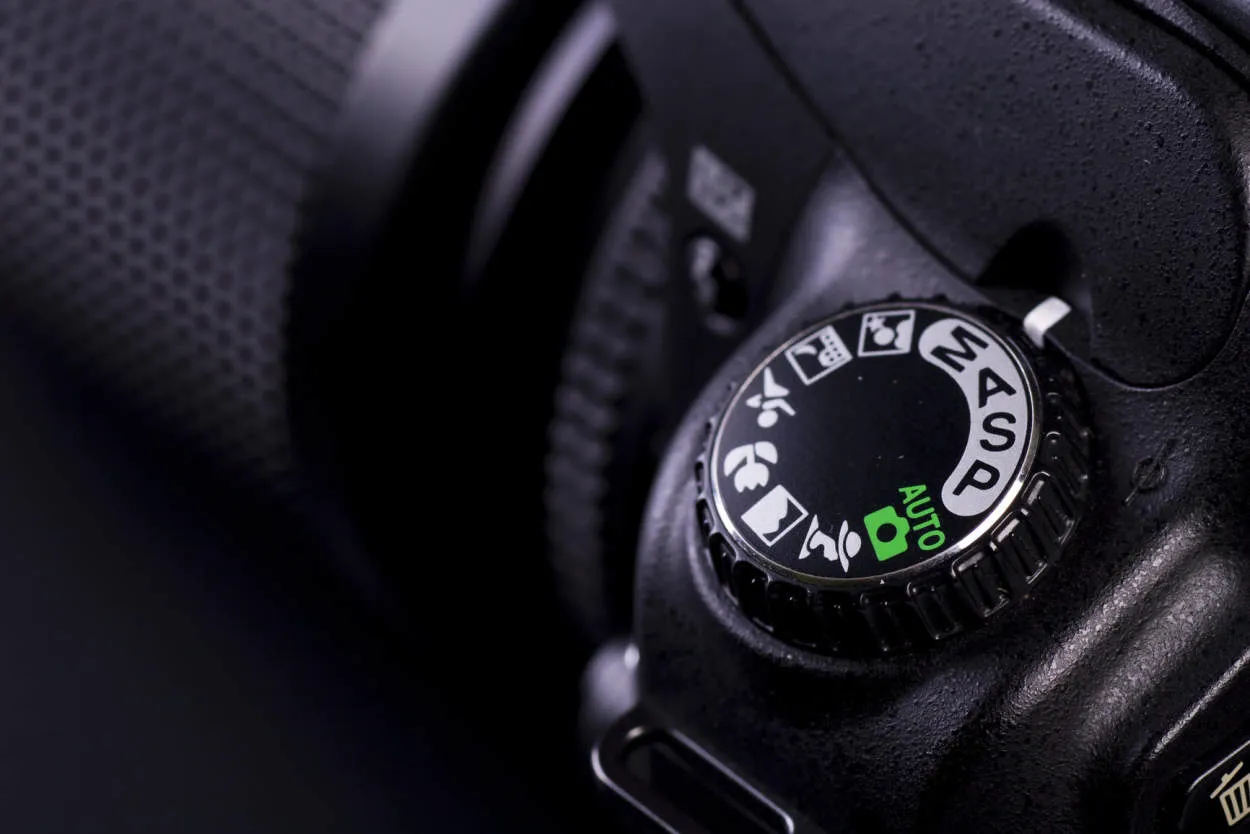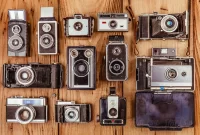Are you in search of the perfect camera to capture your memorable moments in the USA? Look no further! In this article, we will guide you on how to choose the ideal camera that suits your specific needs. Whether you’re a professional photographer or a novice, we have got you covered!
Understanding Different Types of Cameras and Their Uses
In order to choose the perfect camera for your needs in the USA, it’s important to understand the different types of cameras available and their specific uses. Here are some of the most common types of cameras:
-
DSLR (Digital Single-lens Reflex) Cameras:
DSLR cameras are popular among professional photographers due to their versatility and high image quality. They offer interchangeable lenses, manual controls, and advanced features, making them suitable for various photography genres such as landscape, portrait, and wildlife photography.
-
Mirrorless Cameras:
Mirrorless cameras are similar to DSLRs but do not have a complex mirror system. They are more compact and lightweight, making them convenient for travelers and vloggers. Mirrorless cameras provide excellent image quality and offer interchangeable lenses, making them suitable for a wide range of photography styles.
-
Point-and-Shoot Cameras:
Point-and-shoot cameras, also known as compact cameras, are portable and easy to use. They have fixed lenses and automatic settings, making them ideal for casual photography and everyday use. Point-and-shoot cameras are popular among beginners or those who prefer convenience over advanced features.
-
Bridge Cameras:
Bridge cameras bridge the gap between point-and-shoot cameras and DSLRs. They offer manual controls, zoom lenses, and enhanced features, making them a versatile choice for enthusiasts. Bridge cameras provide more control and flexibility than point-and-shoot cameras while being less complex than DSLRs.
-
Action Cameras:
Action cameras are compact and designed for capturing adventures and extreme sports. They are shockproof, waterproof, and equipped with wide-angle lenses, allowing users to record their activities hands-free. Action cameras are perfect for capturing dynamic footage in challenging environments.
-
Film Cameras:
Although less common today, film cameras are still favored by photography purists and enthusiasts. They use traditional film rolls to capture images, providing a unique and nostalgic aesthetic. Film cameras require more skill and patience but can be a rewarding choice for those who appreciate the art of film photography.
By understanding the different types of cameras and their uses, you can make an informed decision when choosing the perfect camera to meet your needs in the USA.
Factors to Consider When Choosing a Camera: Budget, Features, and More
When it comes to choosing the perfect camera to meet your needs in the USA, there are several key factors that you should consider. These factors will help you make an informed decision and ensure that you invest in a camera that will deliver the results you desire.
1. Budget
One of the first things to consider when choosing a camera is your budget. Determine how much you are willing to spend and stick to that range. Cameras come in a wide price range, from affordable options to high-end professional models. Setting a budget will help narrow down your choices and ensure you don’t overspend.
2. Camera Type
There are various types of cameras available, including DSLR, mirrorless, point-and-shoot, and action cameras. Each type has its own advantages and disadvantages. Consider your photography needs and preferences to determine which camera type suits you best. DSLR cameras offer exceptional image quality and versatility, while mirrorless cameras are more compact and lightweight.
3. Features and Specifications
Pay attention to the features and specifications of the cameras you are considering. Some important features to look for include resolution (megapixels), ISO range, autofocus capabilities, video recording options, and connectivity. Consider the type of photography you will be doing and choose a camera with the necessary features to support your creative vision.
4. Lens Compatibility
If you are planning to expand your photography skills and invest in additional lenses, it’s important to consider the lens compatibility of the camera. DSLR cameras usually offer a wider range of lens options compared to mirrorless or point-and-shoot cameras. Ensure that the camera you choose is compatible with the lenses you may want to use in the future.
5. User-Friendliness
Consider the camera’s user interface and controls. Cameras with intuitive menus and easy-to-use controls will enhance your shooting experience, especially if you are a beginner. Look for cameras with ergonomic designs and user-friendly features that will allow you to focus on capturing the perfect shot.
6. Online Reviews and Recommendations
Before making a final decision, it’s always helpful to read online reviews and seek recommendations from photographers or photography communities. These resources can provide valuable insights and firsthand experiences with different camera models, helping you make a more informed choice.
Choosing the perfect camera for your needs in the USA requires careful consideration of your budget, camera type, features, lens compatibility, user-friendliness, and insights from others. By taking these factors into account, you can ensure that you invest in a camera that will meet your expectations and capture memorable moments for years to come.
An In-Depth Look at DSLR Cameras and Their Benefits
When it comes to capturing stunning photographs and exploring the world of photography, DSLR cameras are a top choice for both professionals and enthusiasts alike. With their advanced technology and versatility, DSLRs offer a multitude of benefits that set them apart from other camera options.
One of the key advantages of DSLRs is their ability to produce high-quality images. These cameras feature larger image sensors, which allow for better light gathering and superior image detail. This means that DSLRs can capture more vibrant colors, finer textures, and greater dynamic range, resulting in breathtaking photos that truly stand out.
Another benefit of DSLRs is their flexibility and control. These cameras offer an extensive range of manual settings, allowing photographers to have full creative control over their images. From adjusting shutter speed and aperture to choosing the perfect lens for every situation, DSLRs empower photographers to unleash their creativity and achieve their desired results.
DSLRs also excel in capturing fast-moving subjects. With their advanced autofocus systems and high continuous shooting speeds, these cameras are perfect for capturing action-packed moments with precision and clarity. Whether you’re photographing sports events, wildlife, or any other fast-paced subjects, DSLRs ensure that you never miss a crucial moment.
Additionally, DSLRs provide a wide range of accessories and lenses, further expanding their capabilities. From telephoto lenses for capturing distant subjects to wide-angle lenses for stunning landscape photography, the variety of available options allows photographers to adapt their DSLRs to any shooting scenario. This versatility makes DSLRs a suitable choice for various photography genres and styles.
While DSLRs offer numerous benefits, it’s important to note that they also come with a steeper learning curve compared to other camera types. Understanding the different settings and features may require some time and practice. However, the investment in learning how to use a DSLR can lead to immense rewards and unleash your full creative potential.
Exploring Mirrorless Cameras as a Lightweight Alternative
When it comes to selecting the perfect camera that meets your needs in the USA, exploring mirrorless cameras as a lightweight alternative is worth considering. Mirrorless cameras offer numerous advantages over traditional DSLRs, making them a popular choice among photographers and videographers.
One major benefit of mirrorless cameras is their compact and lightweight design. Unlike DSLRs that incorporate a mirror and prism system, mirrorless cameras do away with these components, resulting in a smaller and lighter camera body. This makes mirrorless cameras highly portable and ideal for travel photographers who value convenience without compromising on image quality.
Another advantage of mirrorless cameras is their electronic viewfinder (EVF). Unlike optical viewfinders in DSLRs, EVFs provide a real-time preview of your image. This helps you visualize the final result before even pressing the shutter button, allowing for better composition and exposure adjustments.
Additionally, mirrorless cameras have a silent shooting mode, making them ideal for event photography or situations where silence is necessary. The absence of a mirror mechanism eliminates the loud noise typically associated with DSLRs. This makes mirrorless cameras particularly suitable for capturing intimate moments at weddings, concerts, or other sensitive environments.
Furthermore, mirrorless cameras offer advanced autofocus systems with impressive tracking capabilities. Many models employ hybrid autofocus systems, combining both phase and contrast detection. This enables fast and accurate focusing, making mirrorless cameras suitable for capturing fast-paced action or wildlife photography.
In terms of lens options, mirrorless cameras have a growing range of lenses available. While DSLRs have a wide selection of lenses due to their longer history, mirrorless systems are catching up quickly. Major camera manufacturers continue to release new lenses specifically designed for their mirrorless systems, ensuring a diverse selection to cater to different photography needs.
In conclusion, if you’re looking for a lightweight alternative when choosing the perfect camera in the USA, explore mirrorless cameras. Their compact size, electronic viewfinders, silent shooting mode, advanced autofocus, and expanding lens options make them a compelling choice for both professional and amateur photographers.
Conclusion
Choosing the perfect camera in the USA requires careful consideration of your specific needs and preferences. Factors such as your photography experience, budget, desired features, and intended use should all be taken into account. Whether you are a casual photographer or a professional, conducting thorough research and seeking expert advice will help you make the best decision.




